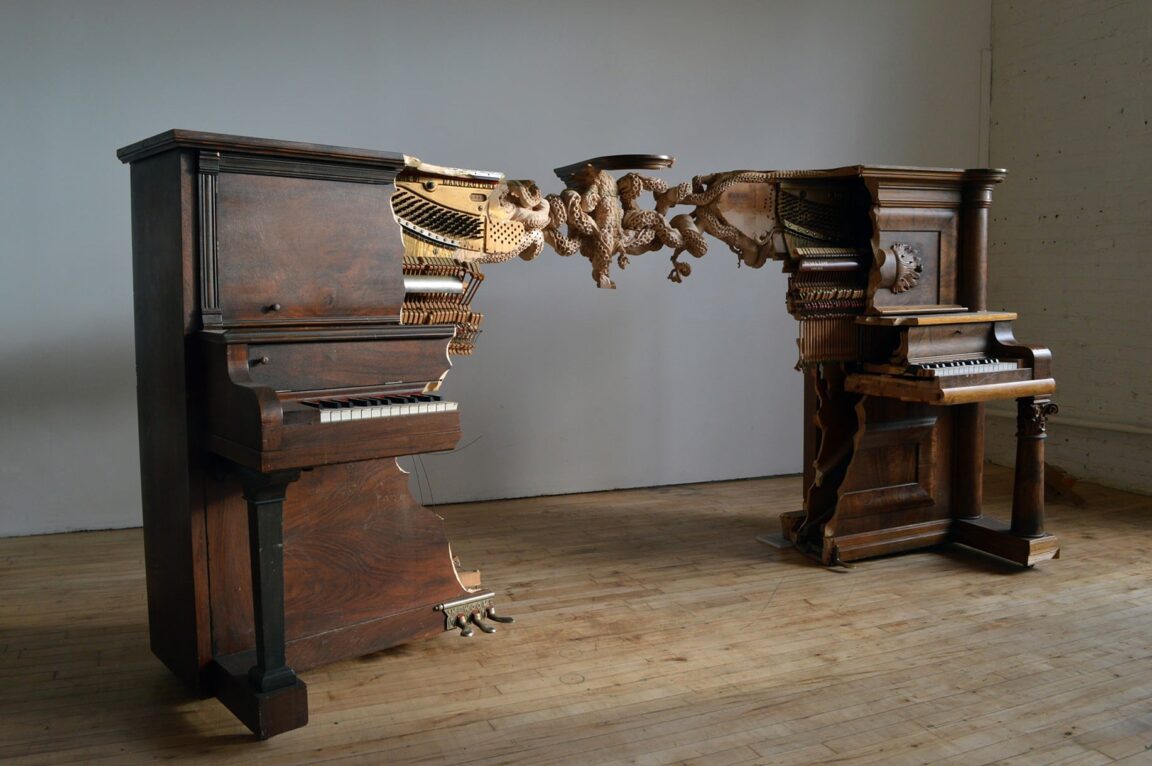- Artist Maskull Lasserre explores the hidden potential of piano components in his sculpture “The Third Octave.”
- The piece features an intricate octopus sculpture carved into two pianos, symbolizing the connection between art and music.
- Lasserre’s work often reimagines reclaimed materials, offering a counterpoint to a society focused on new technology.
- His sculptures, including “Improbable Worlds,” reveal hidden depths and narratives within everyday objects.
- Lasserre’s current project is a large public work in Squamish, British Columbia.
Ah, the enchanting world of art and music, where imagination dances with reality! Let’s embark on an exploration of Maskull Lasserre‘s artistic vision, where he transcends the boundaries of the ordinary. His latest creation, “The Third Octave,” transcends the definition of a mere sculpture. It’s a gateway where the realms of music and visual art converge in a most spellbinding manner.

Picture yourself stepping into a space where you encounter two upright pianos. However, these aren’t arranged in the conventional manner you might expect. Instead, they are fused into a singular, awe-inspiring entity by an elaborate sculpture. This creation is not ordinary by any means. It’s a captivating tangle of octopus tentacles, carved with such finesse and attention to detail, it almost invites you to reach out and touch its lifelike texture. Lasserre has skillfully repurposed the unassuming back panel of these pianos, transforming it into a playground for his creative vision, thereby unveiling a hidden, mystical world within these musical instruments.
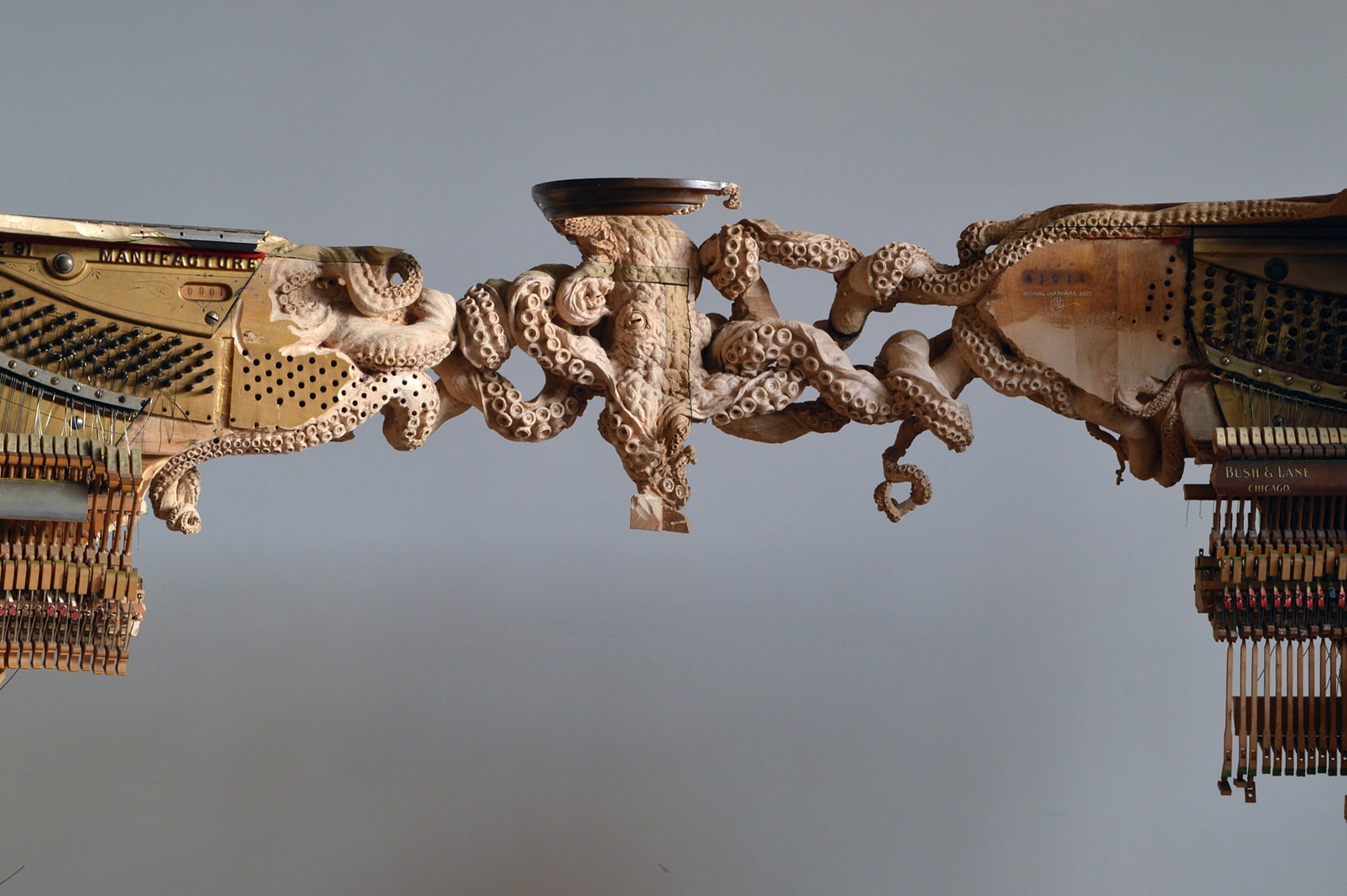
The tentacles, each corresponding to the eight notes of the octave, weave their way through the pianos. It’s as if Lasserre is playing a visual symphony, blending the tactile nature of the wood with the fluidity of the ocean. The right piano even boasts a lively Minoan-style marine illustration, adding another layer of narrative to this already captivating piece.
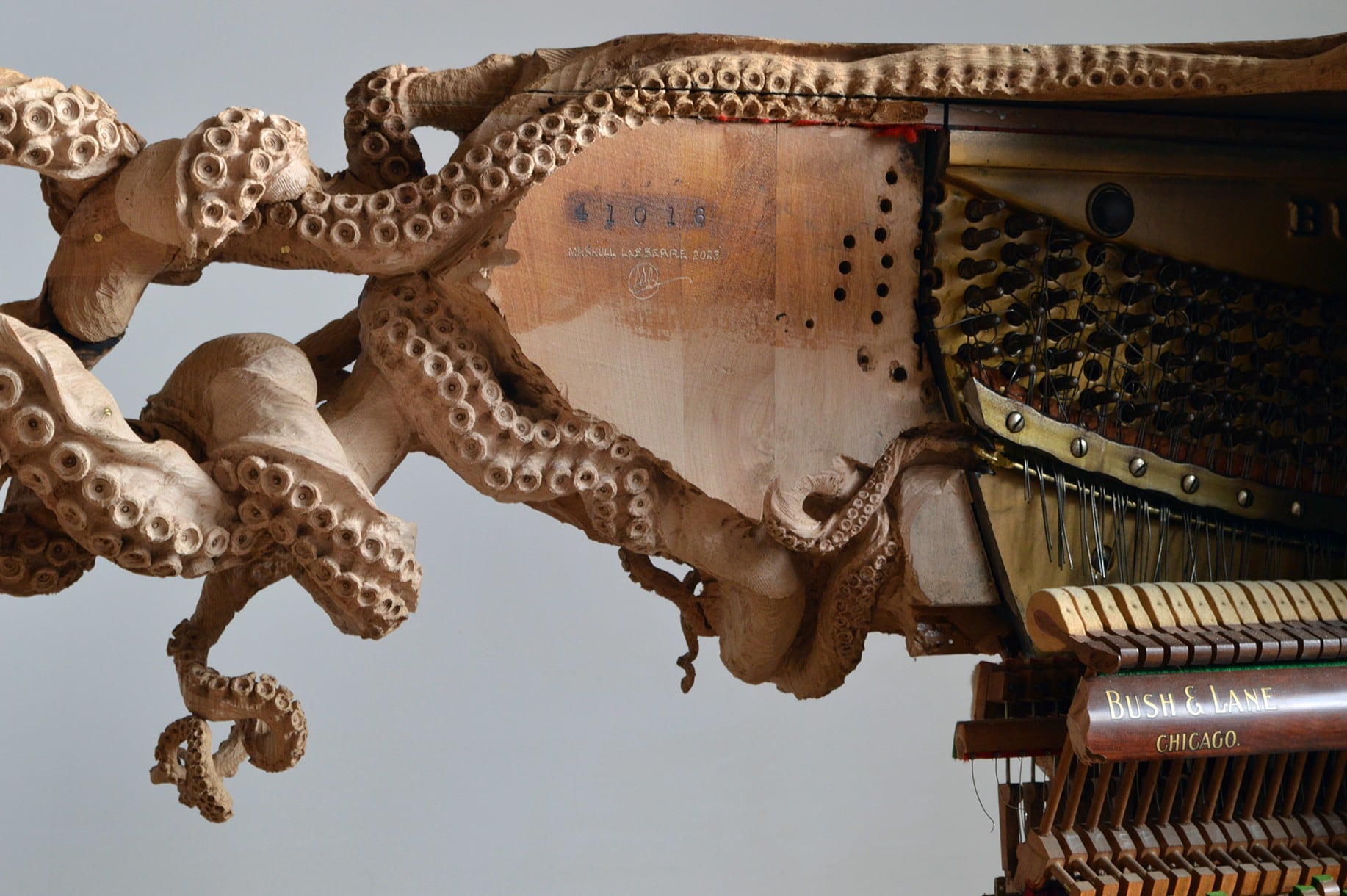
But Lasserre’s genius doesn’t stop there. Underneath one set of pedals, he strategically places two books, “On Growth and Form” by D.W. Thompson and “The Quadruple Object” by Graham Harman. These aren’t just random selections; they are carefully chosen for their size and subject matter, adding a philosophical dimension to the sculpture. The octopus, dwelling in depths beyond our reach, mirrors the hidden potential of the piano’s solid wood, a metaphor for the unseen depths within us all.
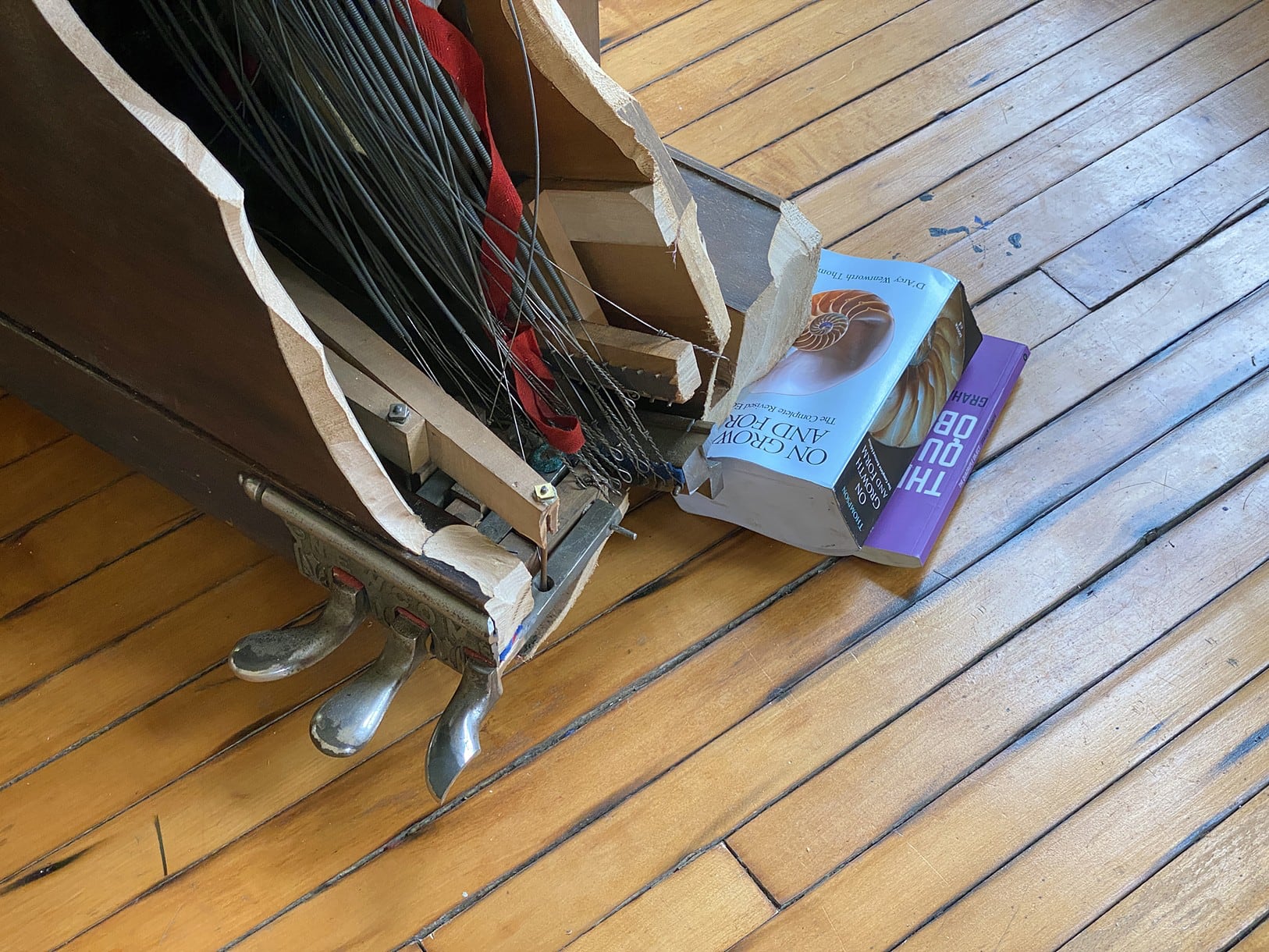
Lasserre’s work often dances with the theme of reclaiming and reimagining. In a society obsessed with the new, his sculptures offer a poignant reminder of the enduring beauty and potential in what already exists. His 2015 piece “Improbable Worlds,” where a tiny wishbone is carved into a piano’s center, echoes this sentiment. It’s as if Lasserre is whispering to us, urging us to look closer, to see beyond the surface.
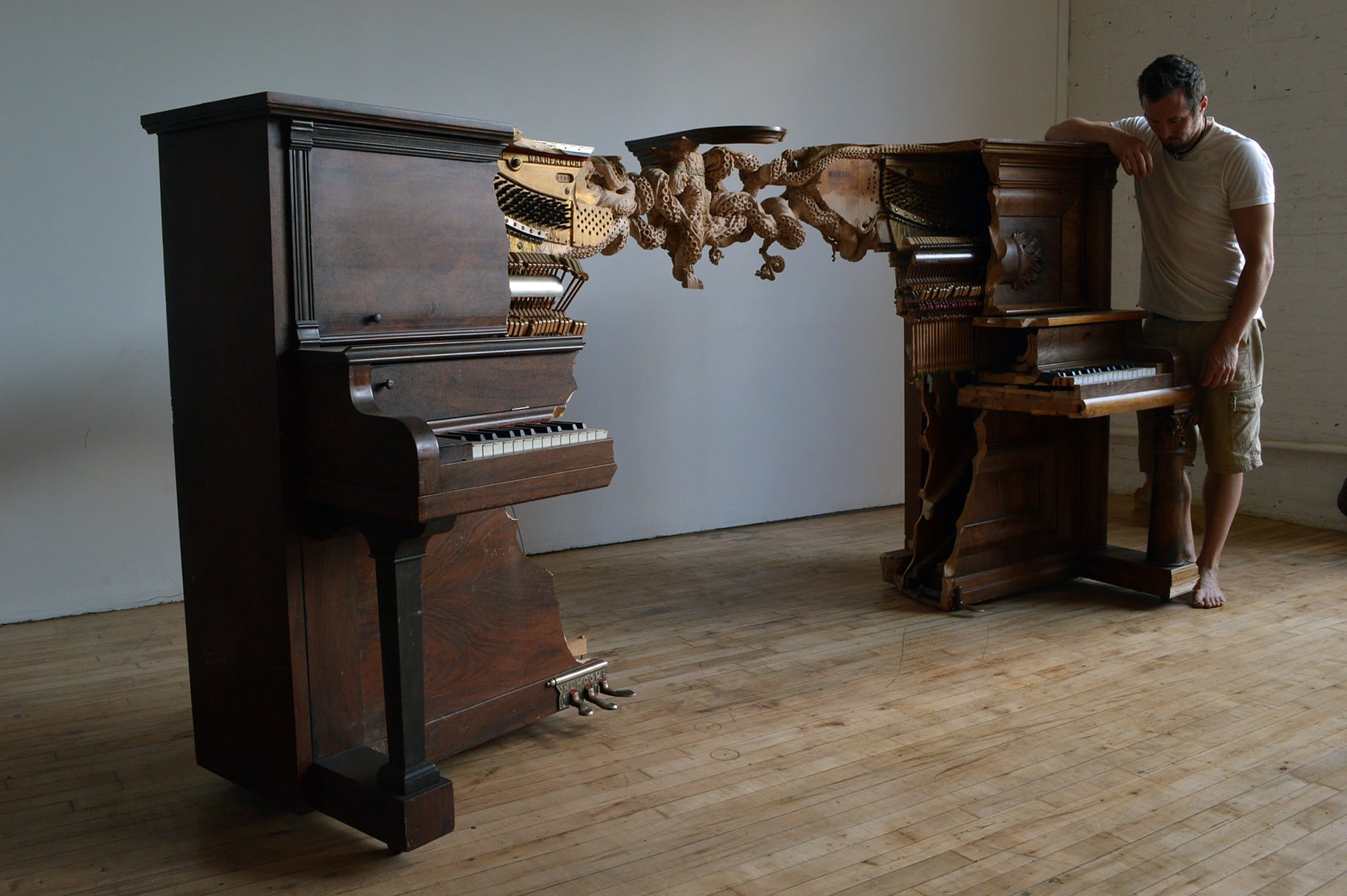
As for Lasserre himself, he’s currently pouring his creativity into a large public work in Squamish, British Columbia. And if “The Third Octave” is anything to go by, we can expect another mesmerizing fusion of art, nature, and the stories hidden in everyday objects.




